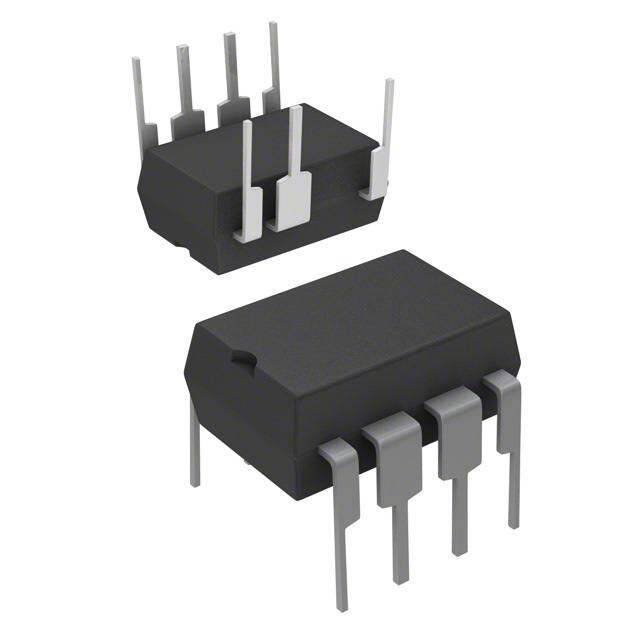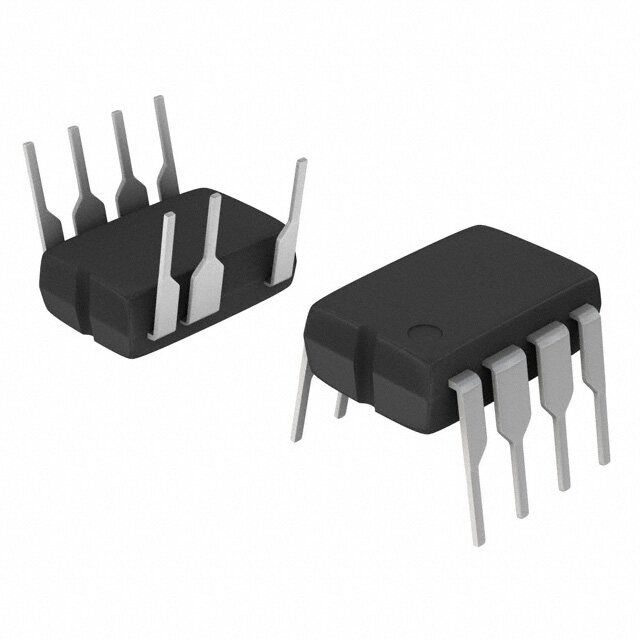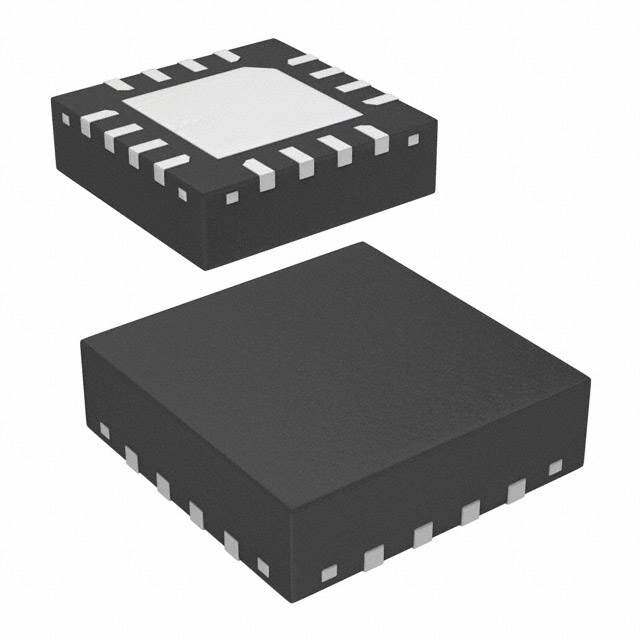ICGOO在线商城 > 集成电路(IC) > PMIC - LED 驱动器 > LYT0006P
- 型号: LYT0006P
- 制造商: Power Integrations
- 库位|库存: xxxx|xxxx
- 要求:
| 数量阶梯 | 香港交货 | 国内含税 |
| +xxxx | $xxxx | ¥xxxx |
查看当月历史价格
查看今年历史价格
LYT0006P产品简介:
ICGOO电子元器件商城为您提供LYT0006P由Power Integrations设计生产,在icgoo商城现货销售,并且可以通过原厂、代理商等渠道进行代购。 LYT0006P价格参考¥询价-¥询价。Power IntegrationsLYT0006P封装/规格:PMIC - LED 驱动器, LED 驱动器 IC 1 输出 交直流离线开关 反激,SEPIC,降压,升压 401mA DIP-8B。您可以下载LYT0006P参考资料、Datasheet数据手册功能说明书,资料中有LYT0006P 详细功能的应用电路图电压和使用方法及教程。
LYT0006P 是由 Power Integrations 提供的一款 PMIC(电源管理集成电路)- LED 驱动器,主要应用于低功率 LED 照明场景。以下是其典型应用场景及特点: 应用场景: 1. 智能家居照明:适用于智能灯泡、吸顶灯等家用 LED 灯具,支持调光和色彩调节功能。 2. 便携式设备:如手电筒、应急灯、电池供电的 LED 灯等,适合需要高效能转换和小型化设计的产品。 3. 标志与指示灯:用于商业或工业环境中的 LED 标志牌、指示灯以及状态显示灯。 4. 物联网(IoT)灯具:结合无线控制技术(如 Wi-Fi、蓝牙),实现远程控制和智能化管理的 LED 灯具。 特点与优势: - 高效率:LYT0006P 采用先进的开关模式电源技术,能够提供高达 90% 的转换效率,减少能量损耗。 - 恒流驱动:确保 LED 在不同输入电压下保持稳定的亮度输出,延长 LED 寿命。 - 紧凑设计:芯片集成了多种功能模块,减少了外围元件数量,从而降低 PCB 尺寸和成本。 - 保护机制:内置过压、过温、短路等多种保护功能,提高系统可靠性。 - 宽输入电压范围:支持交流或直流输入,适应多种电源环境,例如全球通用电压(85VAC 至 265VAC)。 - 低待机功耗:符合能源之星和其他国际能效标准,待机功耗低于 30mW。 总结: LYT0006P 主要用于需要高效、稳定且小型化设计的 LED 照明产品中,尤其适合对能效要求较高、体积受限的应用场合。它通过简化设计流程和增强系统性能,为现代 LED 照明提供了理想的解决方案。
| 参数 | 数值 |
| 产品目录 | 集成电路 (IC)光电子产品 |
| 描述 | IC LED DRIVER CCLED照明驱动器 LYTSwitch LED Driver 175 mA (MDCM) |
| 产品分类 | |
| 品牌 | Power Integrations |
| 产品手册 | |
| 产品图片 | |
| rohs | 符合RoHS无铅 / 符合限制有害物质指令(RoHS)规范要求 |
| 产品系列 | LED照明电子器件,LED照明驱动器,Power Integrations LYT0006PLYTSwitch™-0 |
| 数据手册 | |
| 产品型号 | LYT0006P |
| 产品种类 | LED照明驱动器 |
| 供应商器件封装 | 8-PDIP |
| 内部驱动器 | 是 |
| 包装 | 管件 |
| 商标 | Power Integrations |
| 商标名 | LYTSwitch |
| 安装类型 | 通孔 |
| 安装风格 | Through Hole |
| 封装 | Tube |
| 封装/外壳 | 8-DIP(0.300",7.62mm),7 引线 |
| 封装/箱体 | PDIP-8 |
| 工作温度 | -40°C ~ 125°C |
| 工作频率 | 66 kHz |
| 工厂包装数量 | 50 |
| 恒压 | - |
| 恒流 | 是 |
| 拓扑 | 回扫,降压(降压), 升压 |
| 最大工作温度 | + 150 C |
| 最大电源电流 | 226 uA |
| 最小工作温度 | - 40 C |
| 标准包装 | 50 |
| 电压-电源 | 85 VAC ~ 308 VAC |
| 电压-输出 | 5.8V |
| 类型-初级 | 通用 |
| 类型-次级 | - |
| 系列 | LYTSwitch-0 |
| 输入电压 | 85 VAC to 308 VAC |
| 输出数 | 1 |
| 输出电流 | 140 mA, 280 mA |
| 频率 | 62kHz ~ 70kHz |


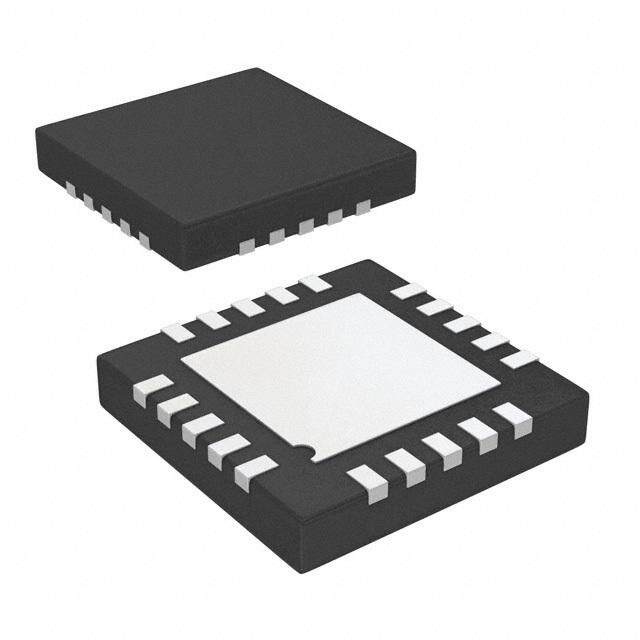
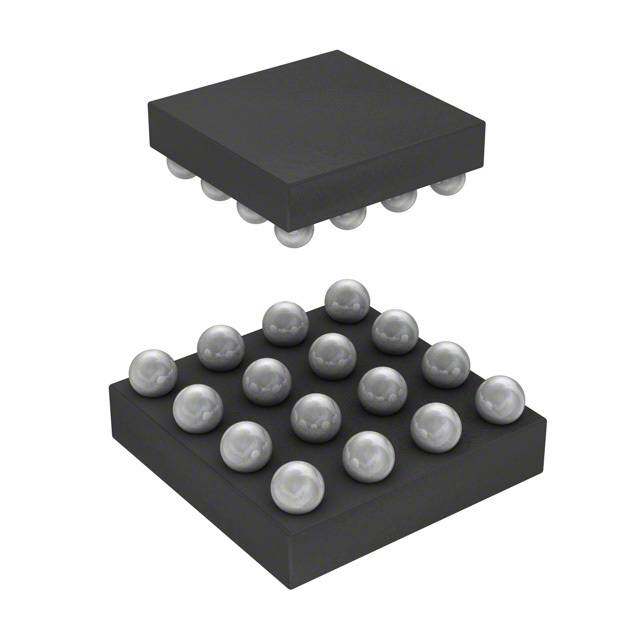

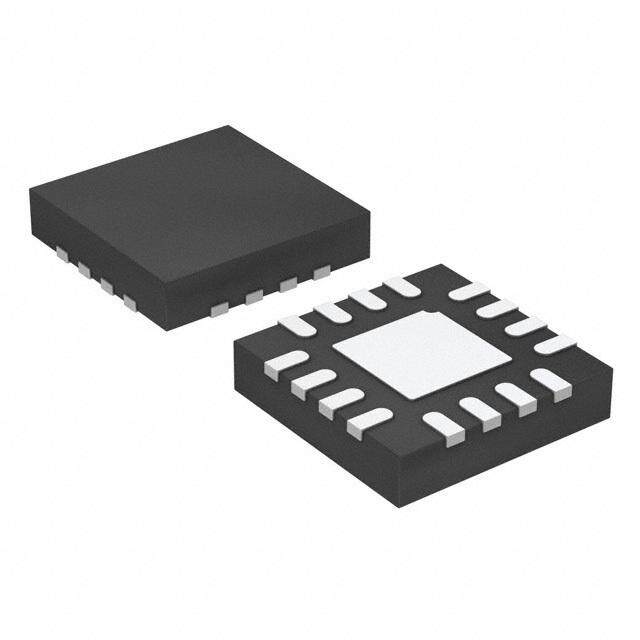


- 商务部:美国ITC正式对集成电路等产品启动337调查
- 曝三星4nm工艺存在良率问题 高通将骁龙8 Gen1或转产台积电
- 太阳诱电将投资9.5亿元在常州建新厂生产MLCC 预计2023年完工
- 英特尔发布欧洲新工厂建设计划 深化IDM 2.0 战略
- 台积电先进制程称霸业界 有大客户加持明年业绩稳了
- 达到5530亿美元!SIA预计今年全球半导体销售额将创下新高
- 英特尔拟将自动驾驶子公司Mobileye上市 估值或超500亿美元
- 三星加码芯片和SET,合并消费电子和移动部门,撤换高东真等 CEO
- 三星电子宣布重大人事变动 还合并消费电子和移动部门
- 海关总署:前11个月进口集成电路产品价值2.52万亿元 增长14.8%


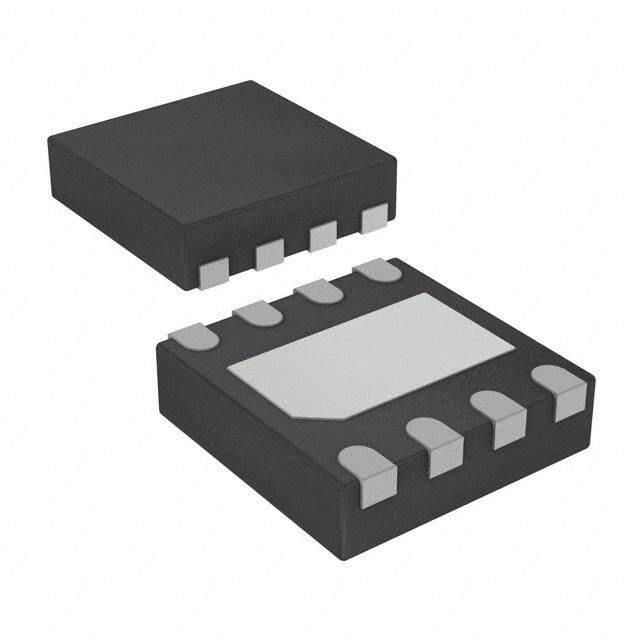


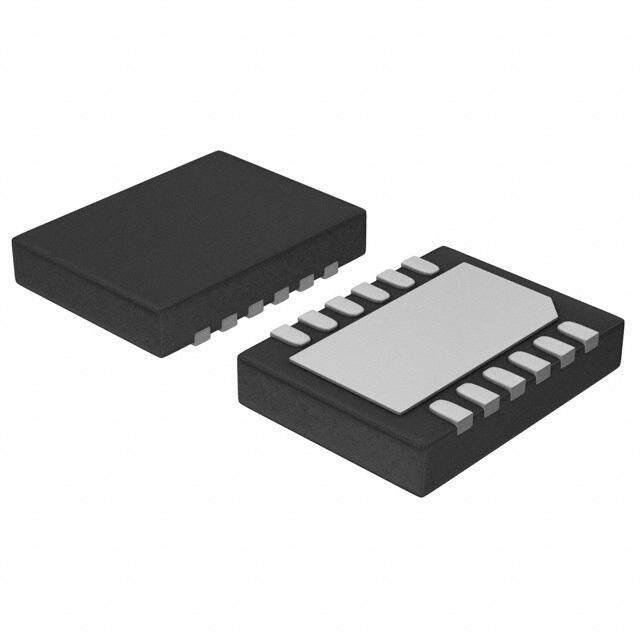
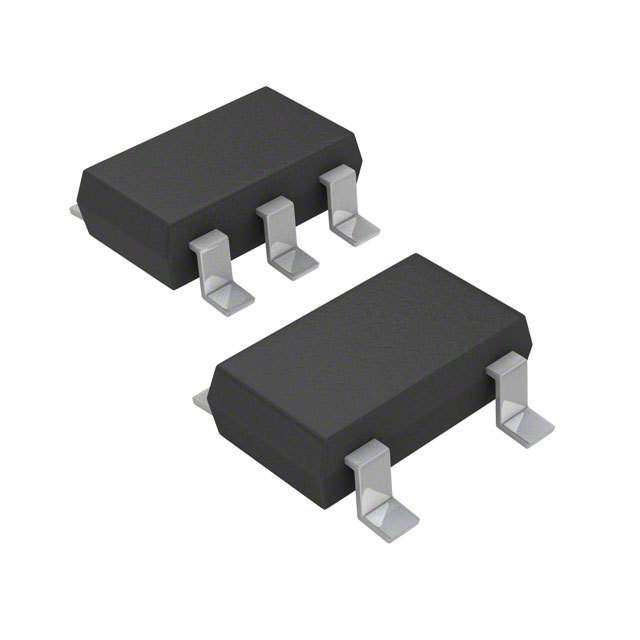
PDF Datasheet 数据手册内容提取
LYT0002/0004-0006 LYTSwitch-0 Off-Line Low Power LED Driver IC Family Lowest Component Count, Off-Line Switcher IC for Non-Isolated LED Lighting Applications Product Highlights • High power factor meeting EU and USA requirements FB BP • Very low component count D S • Frequency jitter reduces EMI LYTSwitch-0 • No bias supply or transformer required V Cost-Effective LED driver IN The LYTSwitch-0 family parts are a highly integrated combination of controller, driver and switching power MOSFET that enable low component-count, non-isolated switching topologies for highly (a) PI-6810-060613 cost competitive LED lighting applications. 66 kHz operation together with frequency jittering insures a very low-cost EMI filter. Less than <50 ms start-up time turn-on FB BP without overshoot, improves end user experience – no delay. + D S LYTSwitch-0 Power Factor Correction V IN Allows designs that easily meet European and North American standards for PFC in consumer lighting applications. PI-6819a-060613 (b) Tight CC Performance Accurate current limit with tight line and load regulation that is Figure 1. Typical Application Schematic (a) Buck, (b) Buck-Boost. stable over a wide temperature range makes the LYTSwitch-0 Output Current Table1 ideal for LED lighting applications. 230 VAC ±15% 85-308 VAC Comprehensive Protection Product6 PF4,5 Integrated auto-restart for short-circuit, open-circuit and open- MDCM2 CCM3 MDCM2 CCM3 loop faults as well as a high threshold over-temperature High 45 mA 65 mA 30 mA 40 mA LYT0002D/P protection feature (min. 135 °C) with automatic restart provide Low 63 mA 80 mA 63 mA 80 mA extensive protection at no additional cost. High 85 mA 110 mA 50 mA 70 mA LYT0004D/P LYTSwitch-0 Supports Different LED Applications Low 98 mA 139 mA 98 mA 139 mA Flyback, buck, buck-boost and boost architectures are all High 100 mA 140 mA 60 mA 90 mA supported by the LYTSwitch-0 family. The 700 V switching power LYT0005D/P Low 120 mA 170 mA 120 mA 170 mA MOSFET supports an input voltage range of 85 VAC to 308 VAC. High 165 mA 220 mA 100 mA 140 mA LYT0006D/P Description Low 200 mA 280 mA 200 mA 280 mA The LYTSwitch™-0 family is specifically designed for low cost Table 1. Output Current Table. LED bulb replacement applications. LYTSwitch-0 devices Notes: integrate a 700 V power MOSFET, oscillator, simple ON/OFF 1. Typical output current in a non-isolated buck converter. See Key Applications control scheme, a high-voltage switched current source, Considerations section for more information. 2. MDCM – mostly discontinuous mode. frequency jittering, cycle-by-cycle current limit and thermal 3. CCM – continuous conduction mode. shutdown circuitry into a monolithic IC. 4. PF high: >0.7 @ 120 VAC and >0.5 @ 230 VAC. 5. PF low: for non-PF application where C >5 mF minimum. IN 6. Packages: P: PDIP-8B, D: SO-8C. The start-up and operating power are derived directly from the voltage on the DRAIN pin. This eliminates the need for a bias supply and associated circuitry plus allowing low-cost discrete inductors to be used. The fully integrated auto-restart circuit in the LYTSwitch-0 family safely limits output power during fault conditions such as short-circuit or open-loop, reducing component count and lower system cost. Package options for thru-hole and SO-8C (D Package) PDIP-8B (P Package) surface-mount suit different manufacturing requirements. Figure 2. Package Options. www.power.com June 2015 This Product is Covered by Patents and/or Pending Patent Applications.
LYT0002/0004-0006 Topology Basic Circuit Schematic Key Features FB BP High-Side + D S • Output referenced to input Buck – LYTSwitch-0 • Positive output (V ) with respect to -V O IN Direct • Step down – V < V V O IN Feedback IN • Low cost direct feedback (±5% typ.) PI-7043-053113 • Output referenced to input Low-Side PI-7044-060313 • Negative output (V ) with respect to +V O IN Buck – + • Step down – V < V I O IN Constant O • Optocoupler feedback Current LED • Low-cost non-safety rated optocoupler Driver; VIN VF+ • Optional Zener provides disconnected load Optocoupler protection Feedback BP FB • Accuracy determined by V variation of F D S optocoupler LED V LYTSwitch-0 R = IF O • Output referenced to input • Negative output (V ) with respect to +V O IN HBuigchk--SBidoeost – FB BP RSENSE IO •• SLotewp- cuops/dt odwirenc –t fVeeO d>b VacINk o (r± V5O% < t yVpIN.) D S Constant • Fail-safe – output is not subjected to input voltage LYTSwitch-0 Current LED if the internal power MOSFET fails V Driver IN • Ideal for driving LEDs – better accuracy and temperature stability than low-side Buck constant current LED driver PI-7045-060313 + • Output referenced to input Low-Side • Positive output (V ) with respect to -V Boost – O IN D • Step up – V > V CCuornrsetnatn LtED VIN LYTSwitch-0 BFBP • Low-cost diOrect fIeNedback (±5% typ.) • Ideal for driving high-voltage LEDs string – good Driver S accuracy and temperature stability PI-7046-053113 + • Output referenced to input • Positive output (V ) with respect to -V O IN Low-Side • Step down – V < V O IN Flyback – • Low-cost direct feedback (±5% typ.) D Constant VIN FB • Fail-safe – output is not subjected to input voltage Current LED LYTSwitch-0 BP if the internal power MOSFET fails Driver S • Ideal for driving very low voltage LEDs string – • good accuracy and temperature stability PI-7047-060313 Table 2. Common Circuit Configurations Using LYTSwitch-0 for Driving LEDs. 2 Rev. B 06/15 www.power.com
LYT0002/0004-0006 BYPASS DRAIN (BP) (D) REGULATOR 5.8 V BYPASS PIN UNDERVOLTAGE + 5.8 V - 4.85 V CURRENT LIMIT COMPARATOR + 6.3 V - VILIMIT JITTER CLOCK DCMAX FEEDBACK THERMAL (FB) SHUTDOWN OSCILLATOR 1.65 V -VT S Q R Q LEADING EDGE BLANKING SOURCE (S) PI-3904-032213 Figure 3a. Functional Block Diagram LYT0002. BYPASS DRAIN (BP) (D) REGULATOR 5.8 V FAULT PRESENT AUTO- RESTART BYPASS PIN 6.3 V COUNTER UNDERVOLTAGE + CLOCK RESET 45.8.85 VV - CCUORMRPEANRTA TLOIMRIT + - VI LIMIT JITTER CLOCK DC MAX FEEDBACK THERMAL SHUTDOWN (FB) OSCILLATOR 1.65 V -V T S Q R Q LEADING EDGE BLANKING SOURCE (S) PI-2367-032213 Figure 3b. Functional Block Diagram LYT0004-0006. 3 www.power.com Rev. B 06/15
LYT0002/0004-0006 Pin Functional Description DRAIN (D) Pin: and quasi-peak emissions. The frequency jitter should be Power MOSFET Drain connection. Provides internal operating measured with the oscilloscope triggered at the falling edge of current for both start-up and steady-state operation. the Drain waveform. The waveform in Figure 5 illustrates the frequency jitter of the LYTSwitch-0. BYPASS (BP) Pin: Connection point for a 0.1 mF external bypass capacitor for the Feedback Input Circuit internally generated 5.8 V supply. The feedback input circuit at the FEEDBACK pin consists of a low impedance source follower output set at 1.65 V. When the FEEDBACK (FB) Pin: current delivered into this pin exceeds 49 mA, a low logic level During normal operation, switching of the power MOSFET is (disable) is generated at the output of the feedback circuit. This controlled by this pin. Power MOSFET switching is terminated output is sampled at the beginning of each cycle on the rising when a current greater than 49 mA is delivered into this pin. edge of the clock signal. If high, the power MOSFET is turned on for that cycle (enabled), otherwise the power MOSFET remains SOURCE (S) Pin: off (disabled). Since the sampling is done only at the beginning This pin is the power MOSFET source connection. It is also the of each cycle, subsequent changes in the FEEDBACK pin ground reference for the BYPASS and FEEDBACK pins. voltage or current during the remainder of the cycle are ignored. 5.8 V Regulator and 6.3 V Shunt Voltage Clamp The 5.8 V regulator charges the bypass capacitor connected to the BYPASS pin to 5.8 V by drawing a current from the voltage P Package (PDIP-8B) D Package (SO-8C) on the DRAIN, whenever the power MOSFET is off. The BYPASS pin is the internal supply voltage node for the LYTSwitch-0. When the power MOSFET is on, the LYTSwitch-0 runs off of the S 1 8 S BP 1 8 S energy stored in the bypass capacitor. Extremely low power S 2 7 S FB 2 7 S consumption of the internal circuitry allows the LYTSwitch-0 to operate continuously from the current drawn from the DRAIN 6 BP 3 S pin. A bypass capacitor value of 0.1 mF is sufficient for both 4 5 FB 4 5 D D S high frequency decoupling and energy storage. 3a 3b BYPASS Pin Undervoltage The BYPASS pin undervoltage circuitry disables the power MOSFET when the BYPASS pin voltage drops below 4.85 V. PI-6899-060613 Once the BYPASS pin voltage drops below 4.85 V, it must rise Figure 4. Pin Configuration. back to 5.8 V to enable (turn-on) the power MOSFET. Over-Temperature Protection LYTSwitch-0 Functional Description The thermal shutdown circuitry senses the die temperature. The threshold is set at 142 °C typical with a 75 °C hysteresis. LYTSwitch-0 combines a high-voltage power MOSFET switch When the die temperature rises above this threshold (142 °C) with a power supply controller in one device. Unlike conventional the power MOSFET is disabled and remains disabled until the PWM (pulse width modulator) controllers, LYTSwitch-0 uses a die temperature falls by 75 °C, at which point it is re-enabled. simple ON/OFF control to regulate the output voltage. The LYTSwitch-0 controller consists of an oscillator, feedback (sense Current Limit and logic) circuit, 5.8 V regulator, BYPASS pin undervoltage circuit, The current limit circuit senses the current in the power over-temperature protection, frequency jittering, current limit MOSFET. When this current exceeds the internal threshold circuit, leading edge blanking and a 700 V power MOSFET. The (I ), the power MOSFET is turned off for the remainder of that LYTSwitch-0 incorporates additional circuitry for auto-restart. cLyIMcIlTe. The leading edge blanking circuit inhibits the current limit comparator for a short time (t ) after the power MOSFET is Oscillator LEB turned on. This leading edge blanking time has been set so The typical oscillator frequency is internally set to an average of that current spikes caused by capacitance and rectifier reverse 66 kHz. Two signals are generated from the oscillator: the recovery time will not cause premature termination of the maximum duty cycle signal (DC ) and the clock signal that MAX switching pulse cycle. indicates the beginning of each cycle. Auto-Restart (LYT0004-0006) The LYTSwitch-0 oscillator incorporates circuitry that introduces In the event of a fault condition such as output overload, output a small amount of frequency jitter, typically 4 kHz peak-to-peak, short, or an open loop condition, LYTSwitch-0 enters into to minimize EMI emission. The modulation rate of the frequency auto-restart operation. An internal counter clocked by the jitter is set to 1 kHz to optimize EMI reduction for both average oscillator gets reset every time the FEEDBACK pin is pulled 4 Rev. B 06/15 www.power.com
LYT0002/0004-0006 600 3 while still meeting conducted EMI limits. Power factor is >0.5 0 13 at 230 VAC and >0.7 PF at 120 VAC meeting requirements for 8 500 0-0 LED lamps in Europe and USA. 6 V 6 DRAIN 3 400 PI- The input stage comprises fusible resistor RF1, bridge rectifier BR1, capacitors C1 and C2, and inductor L1. Resistor RF1 is a 300 flame proof, fusible, wire wound resistor. It accomplishes several functions: a) Inrush current limitation to below specification 200 of BR1; b) Differential mode conducted EMI noise attenuation; c) 100 Fuse should any other component fail short-circuit; d) Higher power factor. Capacitor C1, C2 and inductor L1 forms a π filter 0 to reduce differential mode EMI. Capacitor C2 provides local 68 kHz decoupling for the switching current through U1. There is an 64 kHz optional parallel resistor on the board across L1 which damps the resonance of the pi filter. 0 20 The power processing stage is formed by the integrated Time (µs) MOSFET switch within LYT0006 (U1), a free-wheeling diode Figure 5. Frequency Jitter. (D1), sense resistor (R2), power inductor (L2) and output capacitor (C5). To reduce reverse recovery losses in D1 the high. If the FEEDBACK pin is not pulled high for 50 ms, the value of L2 was designed such that the converter operates in power MOSFET switching is disabled for 800 ms. The auto- mostly discontinuous conduction mode. Diode D1 is an restart alternately enables and disables the switching of the ultrafast diode with a reverse recovery time (t ) ≈35 ns. This power MOSFET until the fault condition is removed. RR recovery is recommended due to the high ambient operating Applications Example time temperature which will increase diode reverse recovery charge. A bobbin based EE10 core size indictor was selected A 6 W (Output) Universal Input Buck LED Driver Converter for L2 in order to prevent changes in inductance value when The circuit shown in Figure 6 is a typical implementation of a placed inside a metal enclosure. Lower cost drum core or dog non-isolated, power factor corrected buck power supply for bone inductor types may also be used, however these have an LED driver applications. The simplicity and low component open magnetic path which can be shorted by a metal enclosure. count make this ideal for space constrained, cost sensitive This reduces the effective inductance and requires the value to designs such as GU10 or A19 size lamps. This design was be adjusted to take this into account when placed inside the optimized to drive an LED string at a voltage of 54 V with a final enclosure. constant current of 110 mA, giving 6 W of output power. The design operates over a universal input range from 90 VAC to Capacitor C5 is the output filter capacitor; its primary function is 265 VAC and achieves an output current tolerance of < ±5% to limit the output current ripple and ensures high frequency at nominal line voltage. The input capacitance (C1 + C2) was currents flow within as small as a loop area as possible to reduced to achieve the highest possible power factor input reduce EMI. R1 C4 4.7 kΩ C3 22 µF 100 nF 16 V FB BP 25 V 54 V, 110 mA 5 4 BR1 L1 D S L2 + MB6S 4.7 mH LYTSwitch-0 RF1 600 V U1 R2 L 4.7 Ω LYT0006P 18.7 Ω 1% C1 C2 C5 90 - 265 RV1* 47 nF 330 nF 47 µF VAC 275 VAC 630 V 450 V 63 V N D1 MURS160T3G *Optional <1 kV Surge Requirements PI-6998f-061313 RTN Figure 6. Universal Input, 54 V, 110 mA Constant Current Power Supply using LYTSwitch-0. 5 www.power.com Rev. B 06/15
LYT0002/0004-0006 The output current is regulated via the voltage across R2 during Component Selection the free-wheeling period when the internal MOSFET of U1 is off. Referring to Figure 6, the following considerations may be This voltage is filtered by capacitor (C4) and fed into the helpful in selecting components for a LYTSwitch-0 design. FEEDBACK pin of U1. Regulation is maintained by skipping switching cycles. As the output current rises, the voltage on Optional Varistor (RV1) the FEEDBACK pin will rise. If this exceeds V then subsequent The Metal Oxide Varistor (RV1) is used to suppress the line FB cycles will be skipped until the voltage reduces below V . surge in order to meet IEC61000-4-5 (differential input line FB 1.2/50 ms and differential ring wave input line surge). A MOV is Open-loop protection is provided via the auto-restart function. recommended for high PF designs with surge levels of 1 kV or If no cycles are skipped during a 50 ms period LYTSwitch-0 will greater. High PF design requires lower input capacitance values enter auto-restart (LYT0004-0006), limiting the average output giving a greater voltage rise across limited input capacitance power to approximately 6% of the maximum overload power. during surge events. A MOV is typically not required if the The auto-restart function requires the value of C3 to be 100 nF design will use high-input capacitance (mF’s vs. nF’s) (non-PF or greater such that the IC remains operational from half-line application). cycle to half-line cycle. Input Capacitance C1 and C2 Use a film capacitor if the input capacitance is less than 1 mF. For disconnected LED protection an optional Zener (not shown) Make sure that the RMS current rating is not exceeded especially can be placed across the output. This will fuse short-circuit if planning to use electrolytic capacitor. For universal or high- and prevent the output voltage rising. line only input design use 400 V or 630 V rated capacitors, and Key Application Considerations for low-line only use 250 V rated capacitors for lower cost and smaller size. LYTSwitch-0 Design Considerations Free-wheeling Diode D1 Output Current Table Diode D1 should be an ultrafast type. For MDCM, reverse Data sheet maximum output current table (Table 1) represents recovery time of ≤75 ns should be used in designs where the the maximum practical continuous output current for both diode temperature is 70 °C or below. Slower diodes are not mostly discontinuous conduction mode (MDCM) and continuous acceptable, as continuous mode operation will always occur conduction mode (CCM) of operation that can be delivered during start-up, causing high leading edge current spikes, from a given LYTSwitch-0 device under the following assumed terminating the switching cycle prematurely, and preventing the conditions: output from reaching regulation. If the diode temperature is 1. Buck converter topology. above 70 °C then a diode with a reverse recovery time of ≤35 ns 2. The minimum DC input voltage is equal to voltage output. should be used. 3. For CCM operation a KRP* of 0.4. 4. Output voltage of 54 VDC. For CCM an ultrafast diode with reverse recovery time ≤35 ns 5. Efficiency of 90%. should be used. Slower diodes cause excessive leading edge 6. A catch/free-wheeling diode with t ≈35 ns is used. current spikes, terminating the switching cycle prematurely and RR 7. The part is board mounted with SOURCE pins soldered to a preventing full power delivery. sufficient area of copper to keep the SOURCE pin tempera- ture at or below 100 °C. Standard plastic or fast (t >75 ns) diodes should never be RR *KRP is the ratio of ripple to peak inductor current. used as the large reverse recovery currents can cause excessive power dissipation in the diode and/or exceed the LYTSwitch-0 Selection and Selection Between maximum drain current specification of LYTSwitch-0. MDCM and CCM Operation Inductor L1 Select the LYTSwitch-0 device, free-wheeling diode and output Choose any standard off-the-shelf inductor that meets the inductor that gives the lowest overall cost. In general, MDCM design requirements. A “drum” or “dog bone” “I” core inductor provides the lowest cost and highest efficiency converter. CCM is recommended with a single ferrite element due to its low-cost designs require a larger inductor and ultrafast (t ≈35 ns) and very low audible noise properties. The typical inductance RR free-wheeling diode in all cases. It is lower cost to use a larger value and RMS current rating can be obtained from the LYTSwitch-0 in MDCM than a smaller LinkSwitch-0 in CCM LYTSwitch-0 PIXls design spreadsheet. The PIXls application is because of the additional external component costs of a CCM part of the PI Expert design suite available for free download design. However, if the highest output current is required, CCM from Power Integrations. Choose L1 greater than or equal to should be employed following the guidelines below. the typical calculated inductance. Topology Options Note that the open magnetic path of non-shielded discrete LYTSwitch-0 can be used in all common topologies, with or inductors may cause inductance value changes when placed without an optocoupler and reference to improve output voltage within metal enclosure requiring a larger value to be used. tolerance and regulation. Table 2 provide a summary of these configurations. 6 Rev. B 06/15 www.power.com
LYT0002/0004-0006 Output Capacitor C5 Feedback Capacitor C4 The primary function of capacitor C5 is to smooth the inductor Capacitor C4 can be a low-cost general purpose capacitor. It current. Select a low or ultra-low ESR series if electrolytic types provides a “sample and hold” function, charging to the sensed are used to ensure capacitor heating is minimized. Ceramic or current value during the off-time of LYTSwitch-0. Its value solid polymer types are also suitable but are typically higher should be 10 mF to 22 mF; smaller values cause poorer regulation cost per unit capacitance. and lower efficiency. This capacitor also bypasses the switching current during the free-wheeling period, reducing the sense Select the voltage rating to be the nearest above the LED string resistor dissipation. voltage. Select the initial capacitance value based on the ripple current parameter calculated in the design spreadsheet. The LYTSwitch-0 Layout Considerations capacitance value may be further increased to reduce the LED In the buck or buck-boost converter configuration, since the ripple current dependent on the specification requirements of SOURCE pins in LYTSwitch-0 are switching nodes, the copper the driver. For long life use 105 °C or above rated parts unless area connected to SOURCE should be minimized to minimize the ambient temperature inside the lamp is less than 80 °C and EMI within the thermal constraints of the design. select a series with an appropriate lifetime rating. Note that operating electrolytic capacitors below their rated temperature In the boost and non-isolated flyback configuration, since the specification will significantly extend their lifetime e.g., 105 °C SOURCE pins are tied to DC return, the copper area connected capacitor operated at 80 °C will increase lifetime by a factor of to SOURCE can be maximized to improve heat sinking. 2 to 3. Sense Resistor R2 The loop formed between the LYTSwitch-0, inductor (L2), Sense resistor should be a 1% tolerance and either pulse rated free-wheeling diode (D1), and output capacitor (C5) should be or overdesigned to avoid resistance drift with time. If using a kept as small as possible. The BYPASS pin capacitor C3 standard metal film type, overdesign power rating by 2-4 times. (Figure 7a) should be located physically close to the SOURCE (S) The value of the resistor is provided in the design spreadsheet. and BYPASS (BP) pins. To minimize direct coupling from U1 D FB R3 C4 D1 L R1 L1 YT R2BP S w S itch S C3 RF1 -0 S S AC INPUT RV1 VR1 C1 C2 ~ + DC OUTPUT ~ – L2 BR1 C5 + Optimize hatched copper areas ( ) for heat sinking. PI-7033-052913 Figure 7a. Recommended Printed Circuit Layout for LYTSwitch-0 in a Buck Converter Configuration using P Package. 7 www.power.com Rev. B 06/15
LYT0002/0004-0006 U1 D LY S + T S S R1 C2 w RV1 FB itch S INAPCUT L1 C1 D1 2 3 4 BP -0 S C5 VR1 OUDTCPUT ~ + R R C C3 L2 ~ – RF1 BR1 Optimize hatched copper areas ( ) for heat sinking. PI-7032-061313 Figure 7b. Recommended Printed Circuit Layout for LYTSwitch-0 in a Buck Converter Configuration using D Package to Bottom Side of the Board. switching nodes, the LYTSwitch-0 should be placed away from R from part to part. A battery powered thermocouple DS(ON) AC input lines. It may be advantageous to place capacitors C1 meter is recommended to make measurements when the and C2 in-between LYTSwitch-0 and the AC input. SOURCE pins are a switching node. Alternatively, the ambient temperature may be raised to indicate margin to Quick Design Checklist thermal shutdown. 4. Check for any presence of reverse current in the DRIAN pin As with any power supply design, all LYTSwitch-0 designs during start-up with the output capacitance fully discharged. should be verified for proper functionality on the bench. The Presence of reverse current is possible for CCM (high-power following minimum tests are recommended: inductance >3 mH) at certain conditions for limited input 1. Correct diode selection – UF400x series diodes are capacitance (V = V every input half-line AC cycle). recommended only for designs that operate in MDCM at an OUT BULK_MIN Using a current probe, check if negative current is measured ambient of 70 °C or below. For designs operating in either by increase input capacitance, reduce inductance or continuous conduction mode (CCM) and/or higher ambient, place an ultrafast diode in series with the Drain node. then a diode with a reverse recovery time of 35 ns or better, 5. Follow the design procedure in AN-60 for the optimum line such as the BYV26C, is recommended. regulation. 2. Maximum drain current – Verify that the peak drain current is 6. Power factor can be optimized by adjusting the conduction below the data sheet peak drain specification under time of the bridge rectifier. Refer to AN-60 for more details. worst-case conditions of highest line voltage, maximum overload (just prior to auto-restart) and highest ambient In a LYTSwitch-0 design using a buck or buck-boost converter temperature. topology, the SOURCE pin is a switching node. Oscilloscope 3. Thermal check – At maximum output power, minimum input measurements should therefore be made with probe grounded voltage and maximum ambient temperature, verify that the to a DC voltage, such as primary return or DC input rail, and not LYTSwitch-0 SOURCE pin temperature is 110 °C or below. to the SOURCE pins. The power supply input must always be This figure ensures adequate margin due to variations in supplied from an isolated source (e.g. via an isolation transformer). 8 Rev. B 06/15 www.power.com
LYT0002/0004-0006 Absolute Maximum Ratings(1,5) DRAIN Pin Voltage ..............................................-0.3 V to 700 V Notes: Peak DRAIN Pin Current (LYT0002) ..............200 mA (375 mA)(2) 1. All voltages referenced to SOURCE, T = 25 °C. A Peak DRAIN Pin Current (LYT0004) ..............400 mA (750 mA)(2) 2. The higher peak DRAIN current is allowed if the DRAIN Peak DRAIN Pin Current (LYT0005) ............800 mA (1500 mA)(2) to SOURCE voltage does not exceed 400 V. Peak DRAIN Pin Current (LYT0006) ..........1400 mA (2600 mA)(2) 3. Normally limited by internal circuitry. FEEDBACK Pin Voltage ..........................................-0.3 V to 9 V 4. 1/16 in. from case for 5 seconds. FEEDBACK Pin Current .................................................100 mA 5. Maximum ratings specified may be applied, one at a time, BYPASS Pin Voltage ...............................................-0.3 V to 9 V without causing permanent damage to the product. Storage Temperature ......................................-65 °C to 150 °C Exposure to Absolute Maximum Rating conditions for Operating Junction Temperature(3) ...................-40 °C to 150 °C extended periods of time may affect product reliability. Lead Temperature(4) .........................................................260 °C Thermal Resistance Thermal Resistance: P Package: Notes: (q ) ................................70 °C/W(3); 60 °C/W(4) 1. Measured on pin 2 (SOURCE) close to plastic interface. JA (q )(1) .................................................11 °C/W 2. Measured on pin 8 (SOURCE) close to plastic interface. JC D Package: 3. Soldered to 0.36 sq. in. (232 mm2), 2 oz. (610 g/m2) copper clad. (q ) ..................... .........100 °C/W(3); 80 °C/W(4) 4. Soldered to 1 sq. in. (645 mm2), 2 oz. (610 g/m2) copper clad. JA (q )(2) ..................................................30 °C/W JC Conditions SOURCE = 0 V; T = -40 to 125 °C Parameter Symbol See FigJure 8 Min Typ Max Units (Unless Otherwise Specified) Control Functions Average 62 66 70 Output f T = 25 °C kHz Frequency OSC J Peak-Peak Jitter 4 Maximum Duty Cycle DC S2 Open 66 69 72 % MAX FEEDBACK Pin Turnoff I T = 25 °C 30 49 68 mA Threshold Current FB J FEEDBACK Pin Voltage V 1.54 1.65 1.76 V at Turnoff Threshold FB V ≥2 V FB I (MOSFET Not Switching) 130 220 mA S1 See Note A DRAIN Pin LYT0002 165 260 Supply Current FEEDBACK Open LYT0004 173 280 (MOSFET I mA S2 Switching) LYT0005 190 310 See Notes A, B LYT0006 226 330 9 www.power.com Rev. B 06/15
LYT0002/0004-0006 Conditions SOURCE = 0 V; T = -40 to 125 °C J Parameter Symbol See Figure 8 Min Typ Max Units (Unless Otherwise Specified) Control Functions (cont.) V = 0 V LYT0002/0004 -5.5 -3.35 -1.8 BP I T = 25 °C CH1 J See Note C LYT0005-0006 -7.5 -4.6 -2.5 BYPASS Pin mA Charge Current V = 4 V LYT0002/0004 -3.8 -2.3 -1.0 BP I T = 25 °C CH2 J See Note C LYT0005-0006 -4.5 -3.3 -1.5 BYPASS Pin V 5.55 5.8 6.10 V Voltage BP BYPASS Pin V 0.8 0.95 1.2 V Voltage Hysteresis BPH BYPASS Pin I See Note D 68 mA Supply Current BPSC Circuit Protection di/dt = 55 mA/ms 126 136 146 T = 25 °C J LYT0002 di/dt = 250 mA/ms 145 165 185 T = 25 °C J di/dt = 65 mA/ms 195 210 225 T = 25 °C J LYT0004 di/dt = 415 mA/ms 222 265 282 I T = 25 °C Current Limit LIMIT J mA (See Note E) di/dt = 75 mA/ms 240 257 275 T = 25 °C J LYT0005 di/dt = 500 mA/ms 271 310 345 T = 25 °C J di/dt = 95 mA/ms 350 375 401 T = 25 °C J LYT0006 di/dt = 610 mA/ms 396 450 504 T = 25 °C J LYT0002/0004 280 360 475 Minimum On Time t LYT0005 360 460 610 ns ON(MIN) LYT0006 400 500 675 Leading Edge T = 25 °C t J 170 215 ns Blanking Time LEB See Note F Thermal Shutdown T 135 142 150 °C Temperature SD Thermal Shutdown T See Note G 75 °C Hysteresis SHD 10 Rev. B 06/15 www.power.com
LYT0002/0004-0006 Conditions SOURCE = 0 V; T = -40 to 125 °C Parameter Symbol See FigJure 8 Min Typ Max Units (Unless Otherwise Specified) Output T = 25 °C 42 55.2 LYT0002 J ID = 13 mA TJ = 100 °C 67 88.4 T = 25 °C 21 27.6 LYT0004 J ON-State ID = 25 mA TJ = 100 °C 40 44.2 R W Resistance DS(ON) T = 25 °C 11 13.8 LYT0005 J ID = 35 mA TJ = 100 °C 19 22.1 T = 25 °C 6 8.1 LYT0006 J ID = 45 mA TJ = 100 °C 11 12.9 LYT0002 50 V = 6.2 V, BP OFF-State Drain V ≥2 V, LYT0004 60 I FB mA Leakage Current DSS VDS = 560 V, LYT0005 75 T = 25 °C J LYT0006 90 V = 6.2 V, V ≥2 V, Breakdown Voltage BV BP FB 700 V DSS T = 25 °C J Rise Time t 50 ns R Measured in a Typical Buck Fall Time t Converter Application 50 ns F DRAIN Supply Voltage 50 V Output Enable Delay t See Figure 10 10 ms EN Output Disable t 0.5 ms Setup Time DST LYT0002 Not Applicable Auto-Restart T = 25 °C t J ms ON-Time AR See Note H LYT0004-0006 50 LYT0002 Not Applicable Auto-Restart DC % Duty Cycle AR LYT0004-0006 6 NOTES: A. Total current consumption is the sum of I and I when FEEDBACK pin voltage is ≥2 V (MOSFET not switching) and the sum of S1 DSS I and I when FEEDBACK pin is shorted to SOURCE (MOSFET switching). S2 DSS B Since the output power MOSFET is switching, it is difficult to isolate the switching current from the supply current at the DRAIN. An alternative is to measure the BYPASS pin current at 6 V. C. See Typical Performance Characteristics section Figure 15 for BYPASS pin start-up charging waveform. D. This current is only intended to supply an optional optocoupler connected between the BYPASS and FEEDBACK pins and not any other external circuitry. E. For current limit at other di/dt values, refer to Figure 14. F. This parameter is guaranteed by design. G. This parameter is derived from characterization. H. Auto-restart on time has the same temperature characteristics as the oscillator (inversely proportional to frequency). 11 www.power.com Rev. B 06/15
LYT0002/0004-0006 470 Ω 5 W 470 kΩ D FB S1 S2 BP 50 V 50 V S S 0.1 µF S S PI-3490-060204 Figure 8. LYTSwitch-0 General Test Circuit. DC MAX (internal signal) tP FB V tEN DRAIN 1 t = P f OSC PI-3707-112503 Figure 9. LYTSwitch-0 Duty Cycle Measurement. Figure 10. LYTSwitch-0 Output Enable Timing. 12 Rev. B 06/15 www.power.com
LYT0002/0004-0006 Typical Performance Characteristics geC)°1.1 PI-2213-012301 cyC)°11..20 PI-2680-012301 Breakdown VoltaNormalized to 25 1.0 Output FrequenNormalized to 25000...864 ( ( 0.2 0.9 0 -50 -25 0 25 50 75 100 125 150 -50 -25 0 25 50 75 100 125 Junction Temperature (°C) Junction Temperature (°C) Figure 11. Breakdown vs. Temperature. Figure 12. Frequency vs. Temperature. t Limitd to 25 C)°1110....0248 PI-3709-111203 Current Limit 1110....0248 Normalized PI-6812-061213 Currenormalize00..64 Normalizddeiid//dd dtt i==/d 16t malized 00..64 LLYYTT00000024 Nd5655io/ drmmmt AA=a// l1µµizssed CL12i31um60rri temm =nAAt 1 N r LYT0005 75 mA/µs 257 mA ( o 0.2 N 0.2 LYT0006 95 mA/µs 450 mA 0 0 -50 0 50 100 150 1 2 3 4 5 6 Temperature (°C) Normalized di/dt Figure 13. Current Limit vs. Temperature at Normalized di/dt. Figure 14. Current Limit vs. di/dt. 7 400 e (V) 65 PI-2240-012301 A) 330500 25 °C PI-6813-061213 g m 100 °C a olt 4 nt ( 250 V e n 3 rr 200 Pi Cu ASS 2 ain 150 SLYcTa0lin0g0 2F ac0to.5rs: P 1 Dr 100 LYT0004 1.0 Y LYT0005 2.0 B LYT0006 3.4 0 50 0 0 0.2 0.4 0.6 0.8 1.0 0 2 4 6 8 10 12 14 16 18 20 Time (ms) Drain Voltage (V) Figure 15. BYPASS Pin Start-up Waveform. Figure 16. Output Characteristics. 13 www.power.com Rev. B 06/15
LYT0002/0004-0006 Typical Performance Characteristics (cont.) pF) 1000 PI-6814-061213 ce ( 100 n Scaling Factors: a cit LYT0002 0.5 a LYT0004 1.0 p LYT0005 2.0 a C LYT0006 3.4 n 10 ai r D 1 0 100 200 300 400 500 600 Drain Voltage (V) Figure 17. C vs. Drain Voltage. OSS 14 Rev. B 06/15 www.power.com
LYT0002/0004-0006 PDIP-8B (P Package) ⊕ D S .004 (.10) .137 (3.48) Notes: -E- MINIMUM 1. Package dimensions conform to JEDEC specification MS-001-AB (Issue B 7/85) for standard dual-in-line (DIP) package with .300 inch row spacing. 2. Controlling dimensions are inches. Millimeter sizes are shown in parentheses. 3. Dimensions shown do not include mold flash or other .240 (6.10) protrusions. Mold flash or protrusions shall not exceed .260 (6.60) .006 (.15) on any side. 4. Pin locations start with Pin 1, and continue counter-clock- wise to Pin 8 when viewed from the top. The notch and/or dimple are aids in locating Pin 1. Pin 6 is omitted. 5. Minimum metal to metal spacing at the package body for the omitted lead location is .137 inch (3.48 mm). Pin 1 6. Lead width measured at package body. 7. Lead spacing measured with the leads constrained to be .367 (9.32) perpendicular to plane T. -D- .387 (9.83) .057 (1.45) .068 (1.73) (NOTE 6) .125 (3.18) .015 (.38) .145 (3.68) MINIMUM -T- SEATING .008 (.20) PLANE .120 (3.05) .015 (.38) .140 (3.56) .300 (7.62) BSC .100 (2.54) BSC .048 (1.22) (NOTE 7) .053 (1.35) P08B .014 (.36) .300 (7.62) .022 (.56) ⊕ T E D S .010 (.25) M .390 (9.91) PI-2551-040110 15 www.power.com Rev. B 06/15
LYT0002/0004-0006 SO-8C (D Package) 0.10 (0.004) C A-B 2X 2 DETAIL A 4 B 4.90 (0.193) BSC A 4 D 8 5 GAUGE PLANE SEATING PLANE 2 3.90 (0.154) BSC 6.00 (0.236) BSC C 0 - 8o 0.25 (0.010) 1.04 (0.041) REF BSC 0.10 (0.004) C D 0.40 (0.016) 2X Pin 1 ID 1 4 0.20 (0.008) C 1.27 (0.050) 1.27 (0.050) BSC 2X 7X 0.31 - 0.51 (0.012 - 0.020) 0.25 (0.010) M CA-BD 1.35 (0.053) 1.25 - 1.65 DETAIL A 1.75 (0.069) (0.049 - 0.065) 0.10 (0.004) 0.10 (0.004) C H 0.25 (0.010) 7X SEATING PLANE 0.17 (0.007) C 0.25 (0.010) Reference Solder Pad + Dimensions Notes: 1. JEDEC reference: MS-012. 2.00 (0.079) 4.90 (0.193) 2. Package outline exclusive of mold flash and metal burr. 3. Package outline inclusive of plating thickness. 4. Datums A and B to be determined at datum plane H. + + + 5. Controlling dimensions are in millimeters. Inch dimensions are shown in parenthesis. Angles in degrees. D07C 1.27 (0.050) 0.60 (0.024) PI-4526-040110 Part Ordering Information • LYTSwitch-0 Product Family • LYT Series Number • Package Identifier P Plastic PDIP-8B D Plastic SO-8C • Tape & Reel and Other Options Blank Standard Configurations Tape & Reel, 2.5 k pcs minimum for D Package. TL Not available for P Package. LYT 0002 D - TL 16 Rev. B 06/15 www.power.com
LYT0002/0004-0006 Notes 17 www.power.com Rev. B 06/15
Revision Notes Date A Initial Release 06/13 B Updated with new Brand Style Logo. 06/15 For the latest updates, visit our website: www.power.com Power Integrations reserves the right to make changes to its products at any time to improve reliability or manufacturability. Power Integrations does not assume any liability arising from the use of any device or circuit described herein. POWER INTEGRATIONS MAKES NO WARRANTY HEREIN AND SPECIFICALLY DISCLAIMS ALL WARRANTIES INCLUDING, WITHOUT LIMITATION, THE IMPLIED WARRANTIES OF MERCHANTABILITY, FITNESS FOR A PARTICULAR PURPOSE, AND NON-INFRINGEMENT OF THIRD PARTY RIGHTS. Patent Information The products and applications illustrated herein (including transformer construction and circuits external to the products) may be covered by one or more U.S. and foreign patents, or potentially by pending U.S. and foreign patent applications assigned to Power Integrations. A complete list of Power Integrations patents may be found at www.power.com. Power Integrations grants its customers a license under certain patent rights as set forth at http://www.power.com/ip.htm. Life Support Policy POWER INTEGRATIONS PRODUCTS ARE NOT AUTHORIZED FOR USE AS CRITICAL COMPONENTS IN LIFE SUPPORT DEVICES OR SYSTEMS WITHOUT THE EXPRESS WRITTEN APPROVAL OF THE PRESIDENT OF POWER INTEGRATIONS. As used herein: 1. A Life support device or system is one which, (i) is intended for surgical implant into the body, or (ii) supports or sustains life, and (iii) whose failure to perform, when properly used in accordance with instructions for use, can be reasonably expected to result in significant injury or death to the user. 2. A critical component is any component of a life support device or system whose failure to perform can be reasonably expected to cause the failure of the life support device or system, or to affect its safety or effectiveness. The PI logo, TOPSwitch, TinySwitch, LinkSwitch, LYTSwitch, InnoSwitch, DPA-Switch, PeakSwitch, CAPZero, SENZero, LinkZero, HiperPFS, HiperTFS, HiperLCS, Qspeed, EcoSmart, Clampless, E-Shield, Filterfuse, FluxLink, StakFET, PI Expert and PI FACTS are trademarks of Power Integrations, Inc. Other trademarks are property of their respective companies. ©2015, Power Integrations, Inc. Power Integrations Worldwide Sales Support Locations World Headquarters Germany Japan Taiwan 5245 Hellyer Avenue Lindwurmstrasse 114 Kosei Dai-3 Bldg. 5F, No. 318, Nei Hu Rd., Sec. 1 San Jose, CA 95138, USA. 80337 Munich 2-12-11, Shin-Yokohama, Nei Hu Dist. Main: +1-408-414-9200 Germany Kohoku-ku Taipei 11493, Taiwan R.O.C. Customer Service: Phone: +49-895-527-39110 Yokohama-shi Kanagwan Phone: +886-2-2659-4570 Phone: +1-408-414-9665 Fax: +49-895-527-39200 222-0033 Japan Fax: +886-2-2659-4550 Fax: +1-408-414-9765 e-mail: eurosales@power.com Phone: +81-45-471-1021 e-mail: taiwansales@power.com e-mail: usasales@power.com Fax: +81-45-471-3717 India e-mail: japansales@power.com UK China (Shanghai) #1, 14th Main Road First Floor, Unit 15, Meadway Rm 1601/1610, Tower 1, Vasanthanagar Korea Court, Rutherford Close, Kerry Everbright City Bangalore-560052 India RM 602, 6FL Stevenage, Herts. SG1 2EF No. 218 Tianmu Road West, Phone: +91-80-4113-8020 Korea City Air Terminal B/D, 159-6 United Kingdom Shanghai, P.R.C. 200070 Fax: +91-80-4113-8023 Samsung-Dong, Kangnam-Gu, Phone: +44 (0) 1252-730-141 Phone: +86-21-6354-6323 e-mail: indiasales@power.com Seoul, 135-728, Korea Fax: +44 (0) 1252-727-689 Fax: +86-21-6354-6325 Phone: +82-2-2016-6610 e-mail: eurosales@power.com e-mail: chinasales@power.com Italy Fax: +82-2-2016-6630 Via Milanese 20, 3rd. Fl. e-mail: koreasales@power.com China (Shenzhen) 20099 Sesto San Giovanni (MI) 17/F, Hivac Building, No. 2, Italy Singapore Keji Nan 8th Road, Nanshan Phone: +39-024-550-8701 51 Newton Road District, Shenzhen, China, Fax: +39-028-928-6009 #19-01/05 Goldhill Plaza 518057 e-mail: eurosales@power.com Singapore, 308900 Phone: +86-755-8672-8689 Phone: +65-6358-2160 Fax: +86-755-8672-8690 Fax: +65-6358-2015 e-mail: chinasales@power.com e-mail: singaporesales@power.com

 Datasheet下载
Datasheet下载